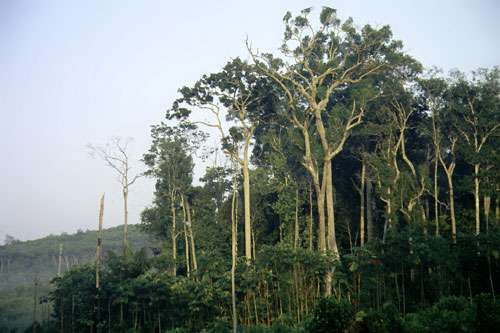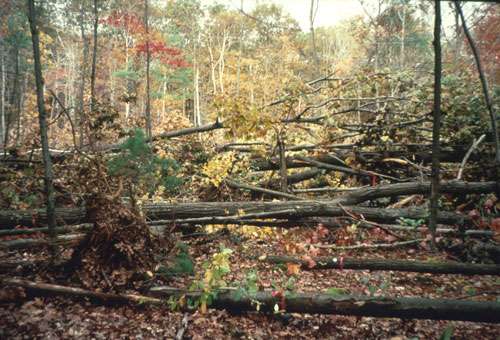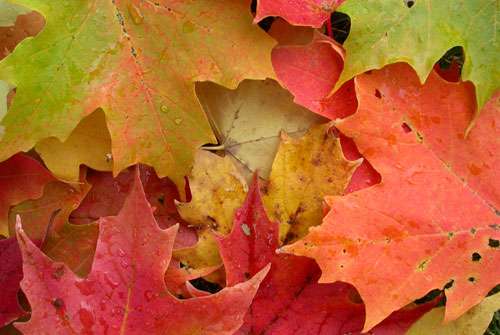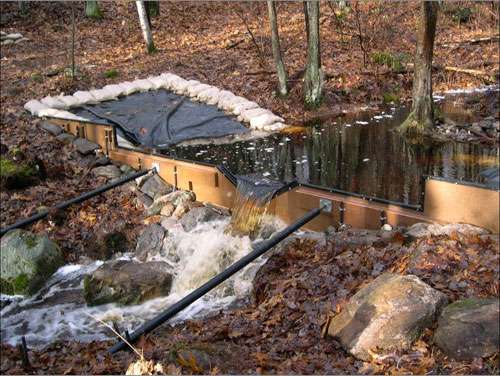Harvard Forest's response to CO2 reveals past and future for the New England landscape

You might never know it, but the seemingly quiet Harvard Forest in Massachusetts is actually hard at work. Like other forests, it's busy doing some serious global housekeeping, which is being monitored by scientists at Harvard University.
"There's this enormous sucking sound, metaphorically speaking, that is happening across the New England landscape and the eastern U.S. It's the carbon being brought down out of the atmosphere, into our forests, which is reducing the amount that is up in the atmosphere," says David Foster, who is director of the Harvard Forest, which stretches for 3,000 acres near Petersham, Mass., about 60 miles west of Boston.
With support from the National Science Foundation (NSF), Foster and other researchers here study forest ecology. "We're trying to understand what shaped the land, where the landscape is going, and what's going to be the fate of the land in the Eastern United States," he explains. That research includes determining how the forest responds to carbon dioxide in the atmosphere.
"Research at the Harvard Forest integrates data collected at multiple time scales, from minutes to centuries, to understand how complex forests function," explains Saran Twombly, program director for Long Term Ecological Research, within the NSF's Directorate for Biological Sciences. "These long-term studies have been necessary to show that slow-growing forests can respond to rapid environmental change. They emphasize the age-old adage that understanding the past is essential to predicting the future."

On the day we visited, atmospheric scientist Bill Munger was climbing up one of two 100-foot towers used to collect air samples. It looks rather risky, as Munger harnesses himself to the tower just before his climb. He cautions that, "if you are really afraid of heights and don't trust your equipment, you can be kind of afraid."
Apparently, he's not. As Munger starts his climb up the tower to change some filters that keep dust from contaminating his instruments, he explains that the carbon dioxide (CO2) measurements are made four times a second, and concentrations change, depending on whether the wind gusts are moving up or down.

"It goes past our sensors, our inlets, and we look at the difference in concentrations or temperature of the air going down and the air coming back up, and then we can add that up over a half an hour and get during that half hour how much CO2 went into the forest or how much came out of the forest," explains Munger.
"So, we get the balance between the incoming and outgoing CO2, and we measure that throughout the year and then we can add it up and say 'this forest took up two tons of carbon for every hector,' or 'it didn't take up any,' or 'it gave some back.'"

After analyzing decades of data, Munger says the Harvard Forest is drawing more and more carbon from the atmosphere every year. He says they've concluded that "every year the forest has been taking up 2 to maybe 4 metric tons of carbon."
Globally, we emit more than 30 billion metric tons of CO2 annually, and that number continues to rise. The forests are working overtime. Foster can confirm that because he says the forest is, "storing more carbon in the form of wood and in the form of material that gets stored, and built into the soils around this landscape."
Foster says forests can't solve the climate problem because globally we pump far more CO2 into the atmosphere than they can take out, but he believes forests are more critical than ever for managing CO2 levels.
More information:
www.nsf.gov/news/news_summ.jsp?cntn_id=126283
www.nsf.gov/news/news_summ.jsp?cntn_id=125744
Provided by National Science Foundation
















